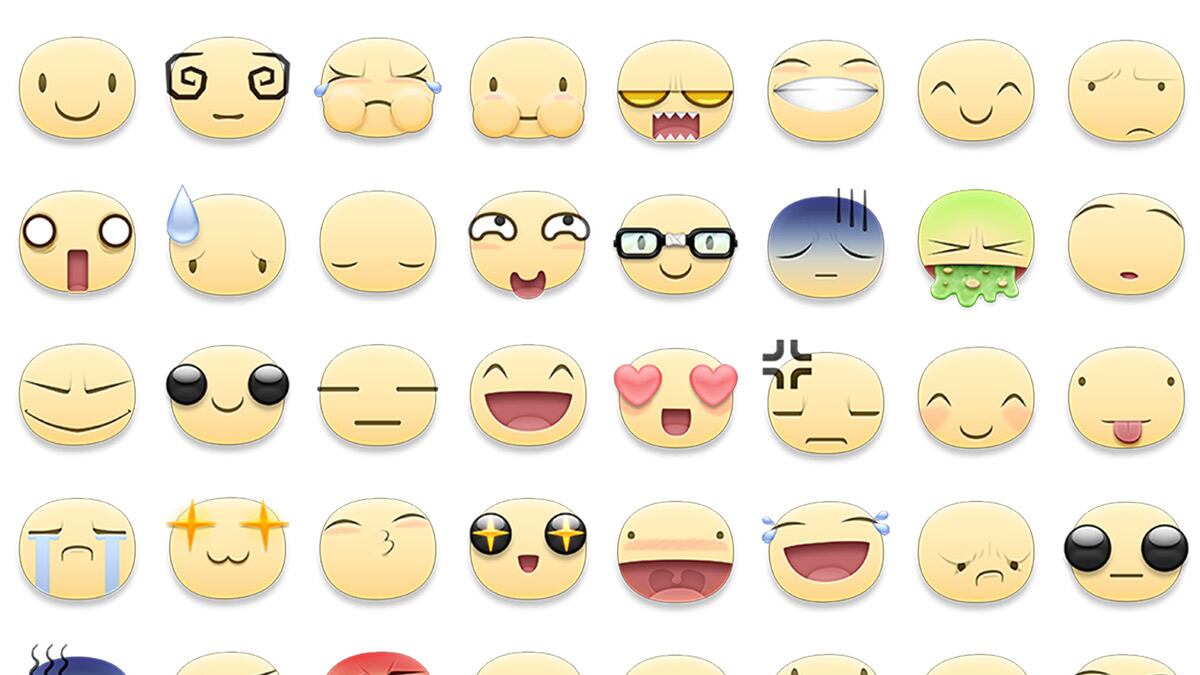The other day I was Facebook chatting with an old and dear friend of mine who has taken it upon herself to become more... cheery, in electronic communication. After a few cheery minutes, something horrible happened. She showed me a new feature on Facebook, and it’s worse than any other new feature the Privacy Robber Barons of The Internet have ever introduced.

Some background: This friend is on an admirable and perpetual quest for self-improvement due to her history of, let’s call it “blunt,” communication. In person, her unfiltered comments mostly work because she’s hilarious. Even when she says something like “You’re fat,” (she told me that once; I was pretty chubbers at the time) she follows up with some kind of disarming addendum (“but not as fat as Fat Albert”) that is usually funny enough to get you to overlook the original offensive comment.
But in text messaging and chat, this is a harder thing to pull off. Harder because what often reminds this blunt and funny friend of mine that she needs to make a funny follow-up comment is the blank, stunned look on the face of whoever received that first jab. In chats and texts, there’s no stunned look. No way to know if she’s just crushed someone’s soul. Even brusk replies to inquiries or invitations can hurt the cyberfeelings of the more (hyper?) sensitive of her friends.
She has come to realize that it’s a modern requirement for her to add some kind of reassurance to just about every kind of digital communication, lest people think she hates them or is just pure evil. Among the options: “xoxo” (nauseating), exclamation marks (one-dimensional), and emoticons (fun!) Which brings us to my startling discovery.
A couple days ago, I Facebook chatted her to ask if she and her fiancé wanted to join me for dinner that night.
She was matter-of-fact and not even the slightest bit rude, but clearly felt compelled at some point to add “mmmmmmmmmmmm that sounds so good!” explaining that her “text tone keeps getting ‘needs improvement’ scores from people. I look at it like letters strung together to form information. but i need more smileys.”
After I threw in a couple more smiley faces and exclamation points, she did something I have never seen anyone do before. Up in my little chat window popped the biggest emoticon I have ever seen. It was literally 20 times bigger than my smiley face, and instead of just dots for eyes, it had hearts and a big open mouth with a pink tongue. It basically took up the whole chat box.
I wrote back “Holy shit how did you do that?”
And she blasted me with another one, this time a weird, alien-looking emoticon with round, white eyes encircled by a black ring and slight shadows, with a rectangular mouth and the same pink tongue. It was like an alien emoticon, and it creeped me the hell out.
“TOO MUCH” I wrote. And then she revealed that this monstrosity of electronic expression can be found right there in the chat box. Top right hand corner, right where there’s a harmless-looking smiley face.
When I clicked on the tab, I found a whole collection of these oversized, ugly little creatures, under the innocuous heading “meep.” They’re not just your typical smiley-face contortions. There’s one of a greenish face vomiting, with a waterfall of puke spilling out of its mouth. Another with what looks like the Pittsburgh Steelers logo for eyes. In a tab right next to “meep,” are a bunch of pictures of cats with huge bodies and very small arms and feet. A cat riding a scooter. Having a birthday. Baking bread (or maybe cookies.)
These are a Facebook creation called “Stickers.” Stickers, according to the company, are "different than emoticons."
“They’re detailed illustrations of characters with personality,” Facebook says. “Sending stickers is a way to share how you’re feeling with your friends.”
Aren’t old-fashioned emoticons a way to share how you’re feeling with your friends too?
Stickers actually launched on mobile platforms in March before it hit the web in July, and was developed by a designer named Sophie Xie, who left the company right after it was implemented.
Here’s the thing about Stickers: they may be a sign that Facebook is actually trying to get with the times. A bunch of other apps have been siphoning off the social network’s younger users especially in places like Asia, in part because those younger users like having more fun and more gigantic emoticons to play with. Thought Catalog recently created a guide to advise readers about how to appropriately use Stickers. Facebook might even start charging people to buy Stickers, though the company has not announced any plans to do so yet.
So maybe, I’m just old and grumpy and out of touch. Regardless, they’re still ugly.





